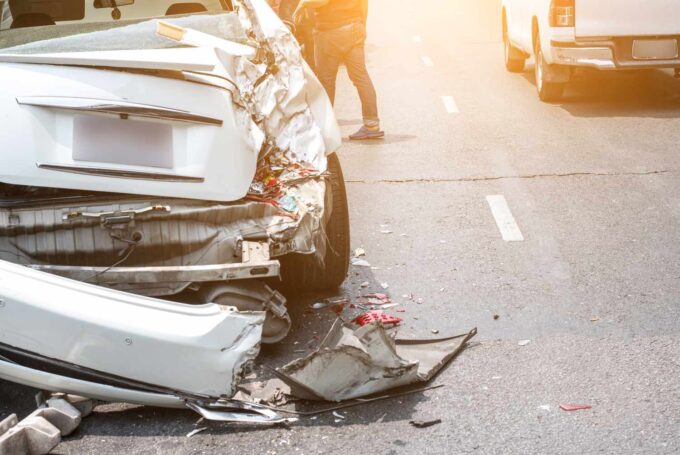According to the National Highway Traffic Safety Administration (NHTSA) report, 42,915 people died in car accidents in 2025. That number is the highest percentage increase since the NHTSA started collecting fatality data in 1975.
“Many road users were affected by the traffic fatality, including drivers, bikers, and pedestrians,” says John Eric Fulda. However, the sudden increase is raising serious concerns across the country. As a result, the United States Department of Transport (DOT) developed the National Roadway Safety Strategy (NRSS) to help end traffic fatality in combination with the safe system approach.
Factors Contributing to the Recent Increase in Road Deaths

The COVID-19 pandemic has contributed to the increase in traffic fatalities. People are more likely to go above speed limits when there are only a few vehicles on the road. Contrary to popular belief, traffic congestion can make roads safer.
During COVID, this was the situation. The average travel speeds in urban areas increased during COVID as traffic and congestion decreased. As a result, some drivers went above the speed limit, endangering pedestrians and others on the road.
Additionally, studies indicate that Americans drove approximately 325 billion more miles last year than in 2020 (an 11.2 percent increase). It also contributed to the increase of deaths on the road. Other factors behind the traffic fatality increase include dangerous driving behavior like distracted driving and driving while intoxicated with alcohol or drugs.
How the DOT Intends to Stop Traffic Fatalities and Injuries

The U.S. DOT chooses the safe system approach as the model for addressing traffic safety in the country. The transportation industry has embraced this approach as an effective means to reduce the risks in our vast and complex transport system.
It functions by building and strengthening several layers of protection to prevent collisions from happening in the first place and reduce the harm done to those involved. A Safe System approach includes the following guiding principles:
- Death and Serious Injuries are Unacceptable: A safe system approach focuses on eliminating collisions that cause fatalities and serious injuries
- Humans Make Mistakes: Unavoidably, people will make mistakes and decisions that can result in or cause crashes. However, the transportation system can be made in such a way to allow specific types and degrees of human error. In addition, to prevent fatalities and severe injuries when an accident happens
- Humans Are Vulnerable: Before death or severe injury, human bodies have a physical limit for the collision forces they can withstand during a crash. It is essential to run a human-centered transport system that considers their physical vulnerabilities
- Responsibility is Shared: To stop road fatalities and serious injuries, it is vital that all stakeholders, including the government, businesses, non-profit organizations, and the general public, work together
- Safety is Proactive: Instead of waiting for accidents to happen and then responding, it is vital to employ proactive tools to identify and solve safety issues in the transportation system
- Redundancy is Crucial: There is a need to strengthen the whole transportation system to minimize risks by ensuring that even if one component fails, the others will keep people safe
Elements of the Safe System Approach
The U.S. DOT developed the National Roadway Safety Strategy (NRSS) to help stop traffic fatalities and injuries. The goal of NRSS is to achieve a traffic death rate of zero in conjunction with the safe system approach.
The NRSS lists five areas to concentrate on to reach this zero traffic fatality goal. These five different areas, also known as the elements of the safe system approach, include:
#1. Safer People

Safer people promote safe, responsible behavior among road users and create conditions that prioritize their ability to get to their destination without getting hurt. According to the NRSS report, the three most common and persistent behavioral safety factors are present in fatal accidents.
These include people in the car not putting on their seatbelts, drunk drinking, and speeding. Therefore, safer people consider human behavior that can compromise safety and create conditions to ensure people get to their destination unharmed.
#2. Safer Roads
The safer road approach entails creating roadway environments that minimize human mistakes, consider injury tolerances, and promote safer behavior. Additionally, the strategy will help the most vulnerable road users travel safely.
How people use roads is significantly influenced by their design. The surrounding environment of the road system also affects the safety risks the public faces while traveling.
These surrounding environments include land use and the intersections of streets, roads, and highways with other modes of transportation like rail and transit. The DOT will prioritize promoting infrastructure design and interventions through the NRSS to improve traffic safety significantly.
#3. Safer Vehicle

Safer Vehicle involves making more vehicle systems and features available, which helps prevent crashes and lessen their impact on occupants and non-occupants. It explores the built-in safety features of cars, such as airbags, seatbelts, and other modern technology like automatic emergency braking.
Enabling safer vehicles also means putting safety measures in place for the commercial motor vehicles that transport passengers and cargo locally across the nation. The DOT will keep utilizing improved motor vehicle safety performance and technologies through the NRSS to increase the safety of vehicle occupants and other road users.
#4. Safer Speeds
The fourth area explores safer speed which is concerned with the traveling speed rate of vehicles. Safer speed encourages safer road speeds in all road environments.
Some strategies to achieve this involve a multi-faceted approach that utilizes roadway designs and other infrastructure interventions, education, enforcement, and speed limit setting. Road design and other infrastructure factors that can prevent excessive speeding from ever occurring affect speed management.
#5. Post-Crash Care

Post-crash care deals with the medical attention victims of accidents receive and the time it takes an ambulance to arrive. It is equally vital to provide medical attention to accident victims so that wounds do not become fatal.
Furthermore, accident victim survival depends greatly on when the ambulances and other emergency personnel arrive. In addition, a crash location is also a significant factor in response time. For instance, getting to a hospital takes longer for accident victims in rural areas, which raises the risk of death.
The DOT is committed to supporting initiatives that enhance post-crash care through the NRSS by managing the crash scene. They also intend to create a secure environment for emergency personnel and onlookers, both essential to providing effective post-crash care.
Final Thought
Everyone has something to contribute to reducing and eradicating road fatalities in the nation. Road accidents will undoubtedly decrease if everyone, including the government, transportation agencies, and road users, collaborate and make the necessary effort.









